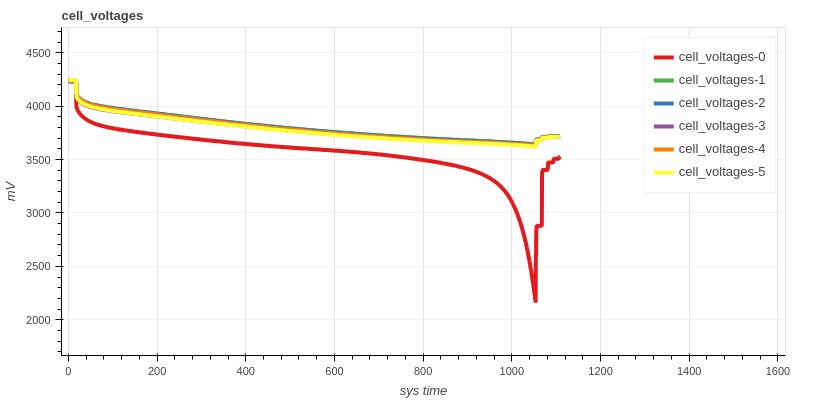Other Parts Discussed in Thread: BQ34Z100
We are using a BQ34Z100-G1 on a 6S Li-Ion battery. The fuel gauge works pretty well with new batteries, but we are running into a problem as the batteries age, particularly with batteries that have a cell that is weaker than the others. I am discharging a battery with a weak cell using a representative load on an Arbin battery tester. The Arbin is set to stop at 20V. The terminate voltage in the fuel gauge is set to 20.1V. At the end of the discharge cycle the fuel gauge is still indicating that the SOC is about 15%. The full charge capacity value is reading higher than what I am able to pull out of the battery with the Arbin. I realize that there is still charge in the battery, but that charge is inaccessible due to an imbalance in the cells. I would like to adjust the fuel gauge to be able to accurately report battery capacity in this situation.
1- Does the fuel gauge need the battery to dwell at the terminate voltage for a certain period of time?
2- What is the difference between FCC and True FCC?
3- Does the battery need to see the terminate voltage to adjust the FCC value?
4- Is the SOH based on the FCC or True FCC?
5- I have noticed on some batteries that if the fuel gauge is overestimating the capacity, when it hits the terminate voltage the SOC will jump immediately to 0% (I know that is the definition of the terminate voltage). Does the fuel gauge update it's FCC estimate when this happens? I would like to avoid having the SOC drop from 10% to 0% instantaneously. This was under a constant load.
Thanks,
Kirk



